Late last month, on a windswept plain near the Polish town of Zagan, the defence ministers of Poland, Germany, Norway and the Netherlands joined the Nato secretary-general, Jens Stoltenberg, to watch Nato’s response to Russia’s incursions into eastern Europe. The dramatic culmination of a week of military manoeuvres, Exercise Noble Jump was a spectacular show of force by Nato’s new VJTF brigade. More than 2,000 troops from nine countries fought a fierce mock-battle against irregular militia, with live ammunition. Huddled in the attendant press pack, struggling to insert my earplugs, this awesome demonstration felt like confirmation — if any were needed — that Europe stands on the brink of a new cold war.
The demonstration began with an assault on a militia hideout. Special forces moved in to dispatch the sentry with one shot. The irregulars inside were flushed out with rapid gunfire, but the militia leader escaped. Soldiers in armoured cars and on motorbikes gave chase. Fighter-bombers swooped on concealed forces and helicopters dropped more troops into the battlefield. Then the tanks rolled in. My earplugs muffled the sound of shellfire, but you could feel the force of each explosion.
No one mentioned Ukraine, but comparisons were inescapable. Nato was preparing for a new kind of conflict in which identities are not clear-cut and battle lines can be hard to draw.
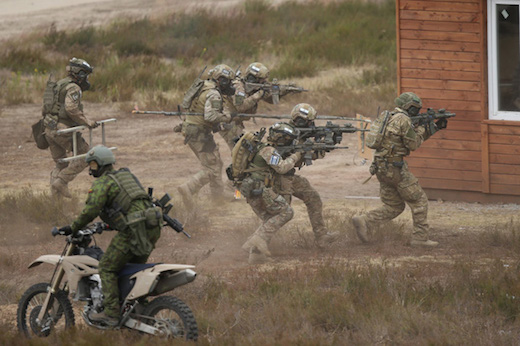
Last year I was in Estonia, one of five Nato member-states that border Russia, when Vladimir Putin annexed Crimea. My host, an Estonian politician, was aghast — he saw the invasion as an act of war. Since then, Putin has asked more questions of the West. Nato’s answer has been the biggest reinforcement since the end of the Cold War. After the Nato summit in Wales last September, the alliance’s ‘ready for action’ Response Force is expanding from 13,000 to 30,000 troops. The VJTF is its spearhead.
VJTF stands for Very High Readiness Joint Task Force (armies love imperfect acronyms) but the key words are Joint and Readiness. The Readiness part is pretty simple: from bases all over Europe, the VJTF is ready to deploy in 48 hours in any Nato country — far faster than ever before.
The Joint part is more complicated but equally important. VJTF troops will be drawn from all 28 Nato countries. This results in a far broader range of firepower than would normally be available to one brigade. Exercise Noble Jump involved Dutch light infantry, Norwegian armoured infantry, German Panzers, US Blackhawk helicopters, Belgian F16 fighter-bombers and special forces from Poland, Lithuania and the Netherlands. British troops weren’t involved, but they soon will be.
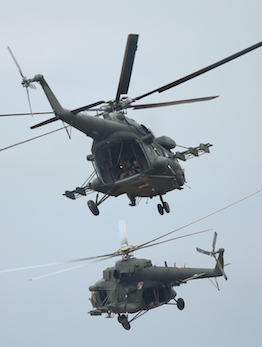
This is the first time that Nato has created a multinational brigade from scratch, but it was actually built around a long-standing multinational force, the German-Netherlands Corps. Established 20 years ago, this corps forms the core of the interim VJTF. ‘Germany and the Netherlands have made a decision to cooperate, and to share their resources,’ says Lieutenant-General Volker Halbauer, the corps’ commander (and if the Dutch can forget their grievances against the Germans, surely anyone can). German efficiency and Dutch pragmatism is an effective combination. Combining different national traits within a single corps isn’t a liability — it’s an asset.
And it isn’t just the top brass who say so. ‘I do believe that multinational cooperation is extremely important and will grow in the future,’ says Warrant Officer Lieske. ‘Every nation has special capabilities and special knowledge.’ His German-Netherlands Corps cap badge bears a Latin motto, Communitate valemus; ‘Together we are strong.’
The VJTF takes this winning combination to a new level. The German-Netherlands Corps is normally ready to deploy within 20 to 30 days. The VJTF can be in the field within two, at the first sign of trouble. Its formation is timely. Russian defence spending has increased to 4 per cent of GDP. Nato members are still striving for 2 per cent. If Nato can’t be bigger, it must be smarter — and more cost-efficient. Pooling military expertise makes strategic and economic sense. For Britons, the idea of a ‘European Army’ may conjure up dark visions of a European superstate, but this isn’t about ever-closer union — it’s about meeting strength with strength. ‘One for all and all for one is the basic principal of this alliance,’ says Stoltenberg, as tanks rumble past and helicopters hover overhead. Like every other Nato member, Britain is duty-bound to defend any of its allies against invasion, and that includes those five Nato members which share land borders with Russia. The VJTF can be deployed in any Nato country, to counter any threat, but the locations of its six regional headquarters are telling: Romania, Bulgaria, Poland and the Baltic states.
The location of these manoeuvres underlines the historic significance of Exercise Noble Jump. This is Silesia, part of Prussia for several centuries and now part of Poland. It’s been a battleground throughout European history. Will it be a battleground again? As the German and Polish defence ministers pose for photos together beside a tank, you can’t help but marvel at how history has turned on its head. Twenty-five years ago this was Warsaw Pact territory, and Poland and Russia were allies. Now Poland and Germany are allies, and Russia is the ghost at the feast.
‘That peaceful period after the second world war is now over — there are more and more crises erupting around Europe,’ says Tomasz Siemoniak, the Polish defence minister (and deputy prime minister). ‘It’s not only the Ukrainian-Russian crisis, but also Isis and a number of different crises in northern Africa. We cannot defend our European way of life if we don’t do more for our defence.’ Noble Jump is just one of over 300 military exercises in Nato countries this year — three times as many as two years ago.
‘Clearly what we see is a Russia that has changed the landscape in Europe,’ says General Philip Breedlove, Supreme Allied Commander for Europe. ‘We see a Russia that has used force to cross an international boundary and change the shape of sovereign nations. And so Nato needs to be ready to meet those kinds of challenges and that’s what this force is about.’
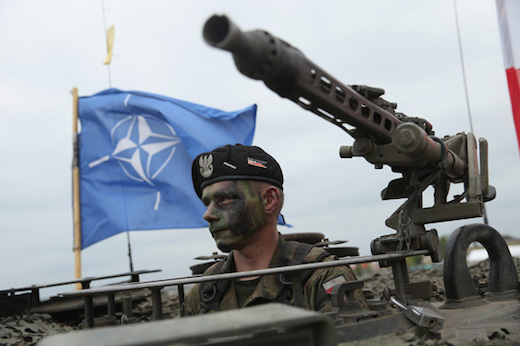
Breedlove is a charismatic figure: a big man with a broad grin and a warm booming voice. He flew combat missions in Bosnia and Kosovo as a US fighter pilot, and he radiates resolve and confidence. ‘Our commitment to our collective defence is rock-solid and you’ve seen it here today,’ he says, and you believe him, but as his soldiers disperse and the press pack scuttles off in search of Wi-Fi and refreshments, my mind wanders back to Jens Stoltenberg’s press conference in Zagan the day before.
The press conference was conducted in the garden of Zagan’s Hotel Willa Park, an old German sanatorium surrounded by ancient oak trees. In that tranquil setting, Stoltenberg’s address seemed reassuring. It was only when I played back the tape that it sounded like a warning. ‘Nato does not seek confrontation with Russia,’ said the secretary general. ‘We seek and strive for a more cooperative relationship, but the precondition for that is Russia respecting the borders of its neighbours, and the fundamental rules which have been so important for peace and stability in Europe for many years. For me, there is no contradiction between defence and dialogue. Actually, I believe that strong defence — firm policies, predictability — is important as a foundation for political dialogue. Nato will continue to strive for dialogue and cooperation, but that cannot be based on weakness or uncertainty. It has to be certain that we are able to defend and protect all our allies. Based on that, we can engage with Russia in political dialogue.’
It was a lovely midsummer’s evening, far too nice to stay indoors. I took a walk into town, past the statute of the astronomer Johannes Kepler, who lived here 400 years ago, to the palace of Albrecht von Wallenstein, the ruthless general of the Thirty Years War. Zagan is a handsome place, but it still bears the scars of battle — and 40 years of communism. It’s 70 years since the German population was driven out and replaced by displaced Poles — yet a lifetime later, the second world war still feels like recent news. For the Germans who fled, and the Poles who replaced them, Zagan is a sombre reminder of what can happen to a place, and a people, when diplomacy — and deterrence — fails.
Got something to add? Join the discussion and comment below.
Get 10 issues for just $10
Subscribe to The Spectator Australia today for the next 10 magazine issues, plus full online access, for just $10.
You might disagree with half of it, but you’ll enjoy reading all of it. Try your first month for free, then just $2 a week for the remainder of your first year.

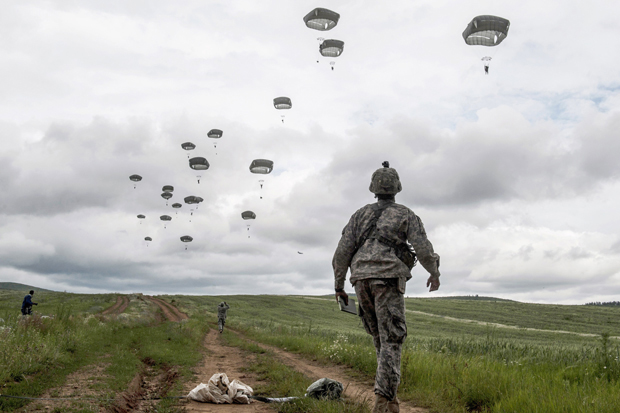
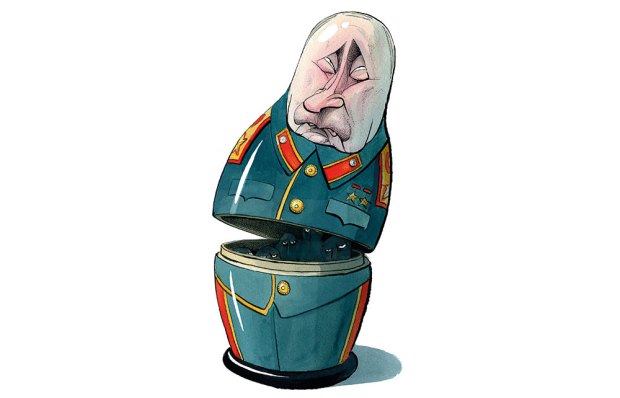
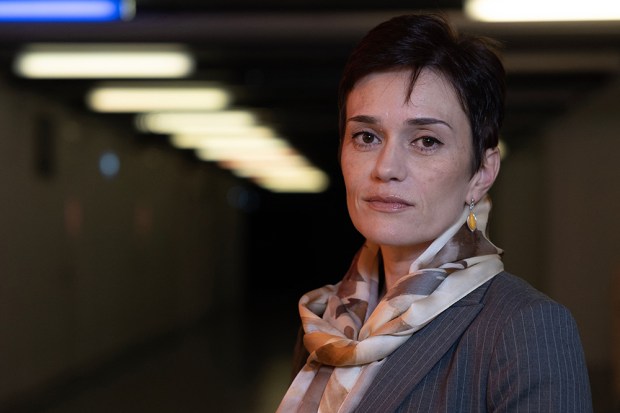
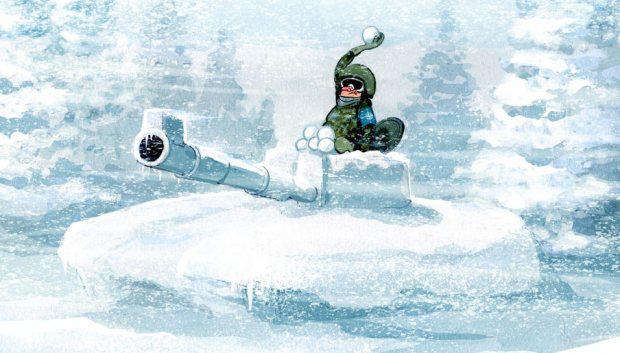









Comments
Don't miss out
Join the conversation with other Spectator Australia readers. Subscribe to leave a comment.
SUBSCRIBEAlready a subscriber? Log in